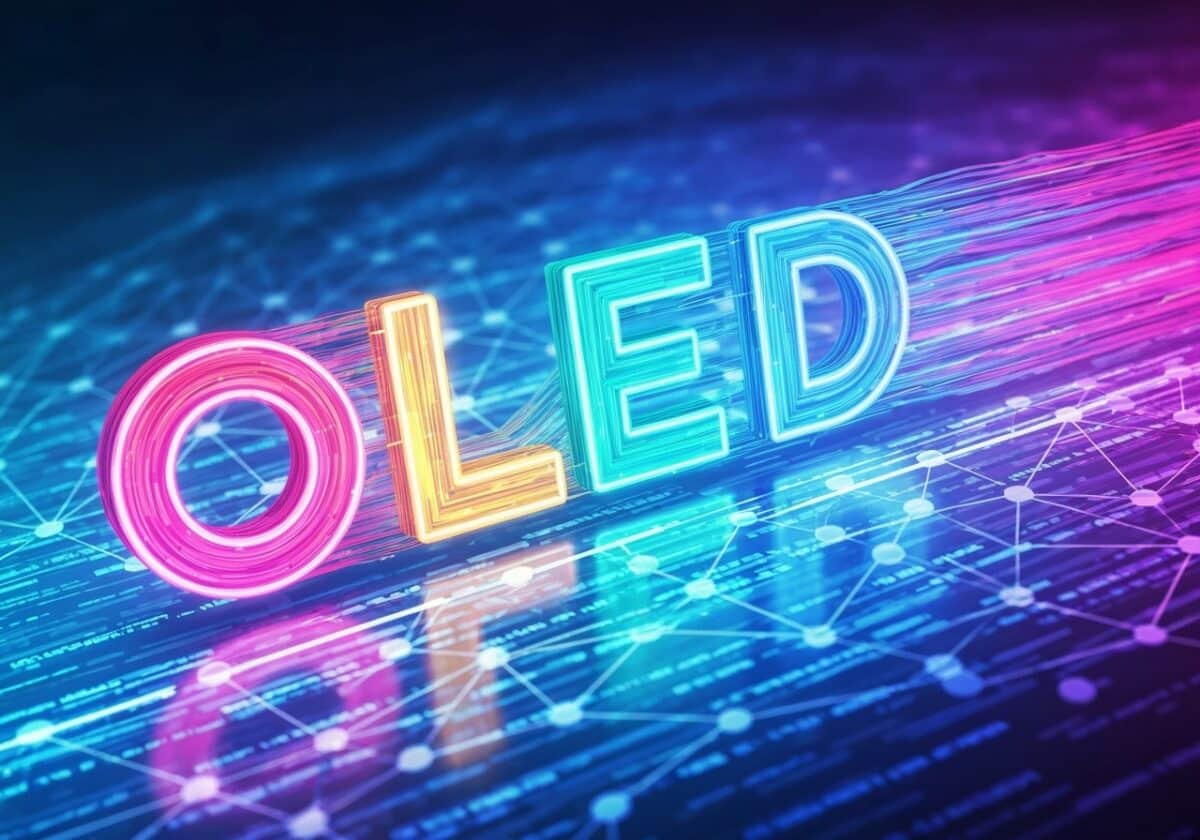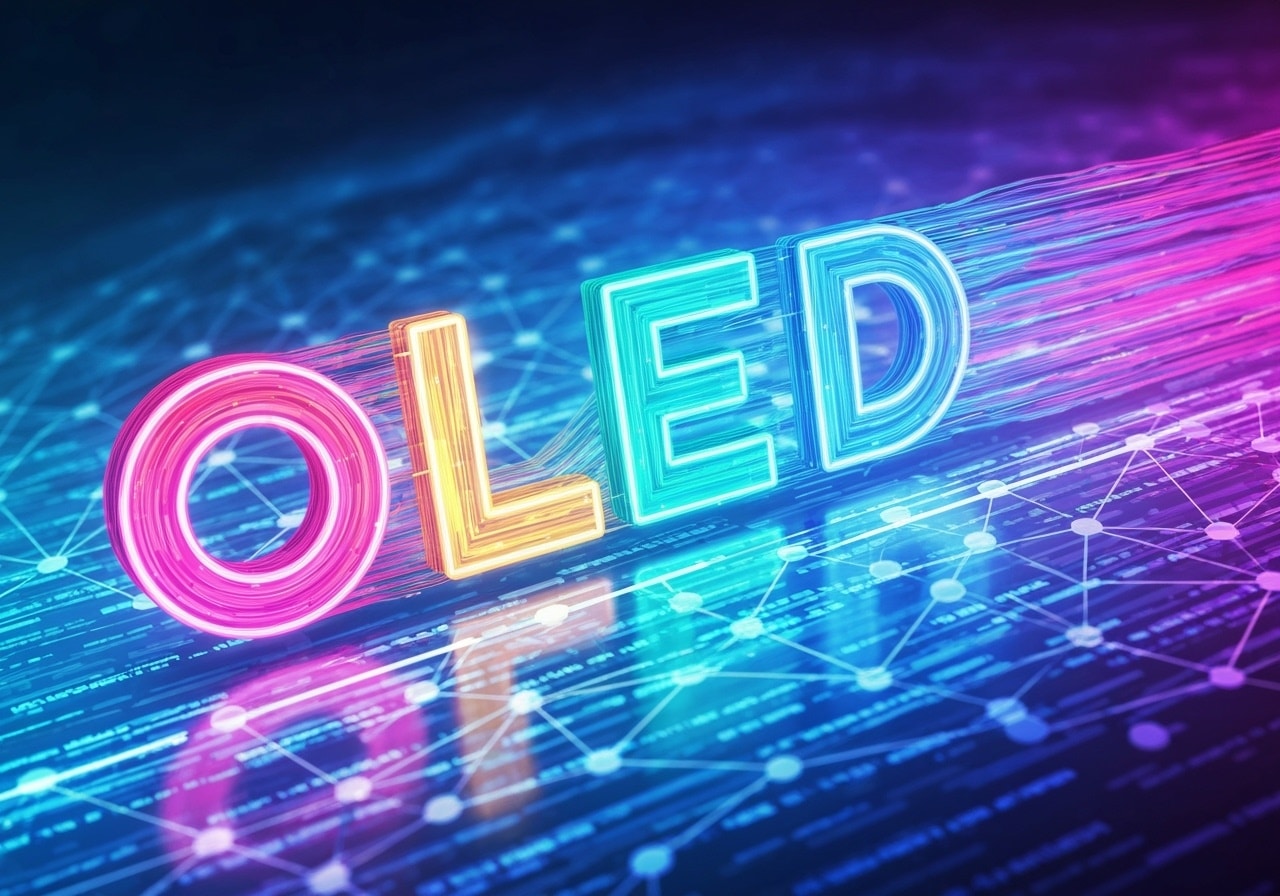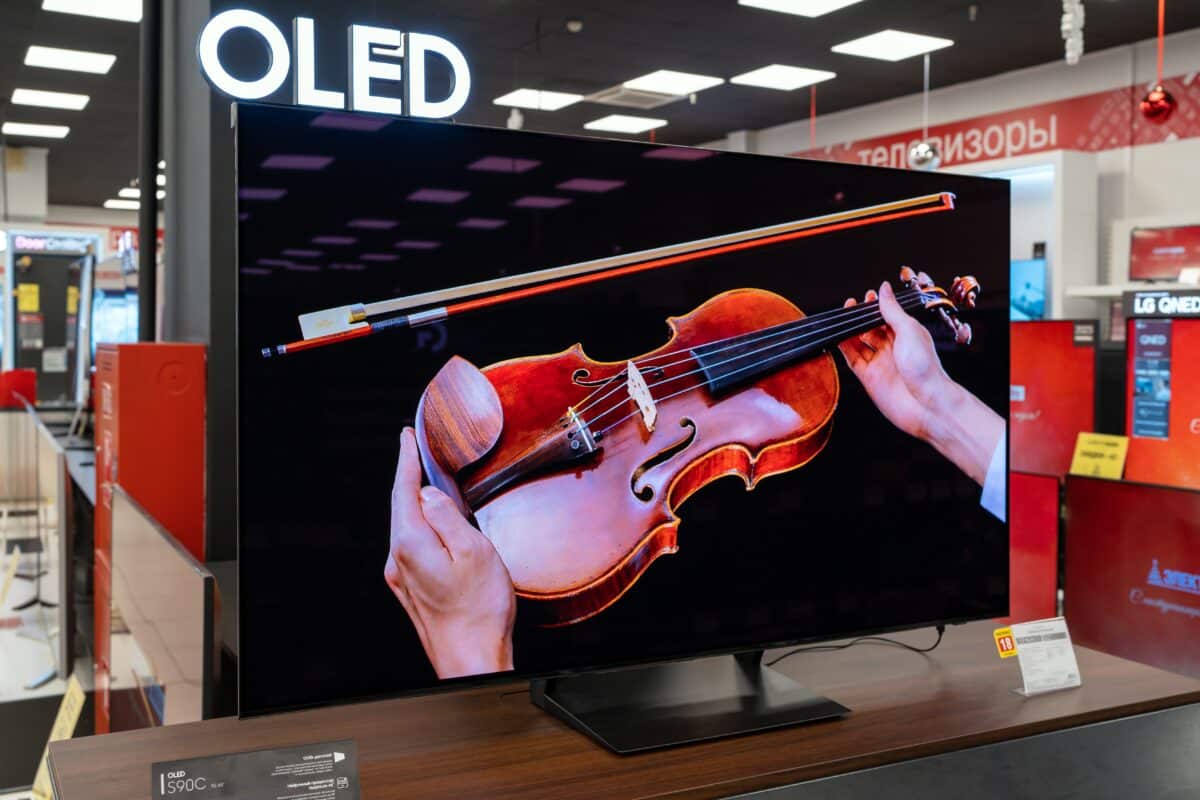
(Image by AI Image Generator on Shutterstock)
In A Nutshell
- Scientists achieved a record 4 Gbps data transmission using custom-built OLEDs, marking the fastest speed ever for OLED-based visible light communication.
- The system maintained high-speed performance over 2 meters (4.0 Gbps) and 10 meters (2.9 Gbps), dramatically surpassing previous VLC distance records for OLEDs.
- Key to the breakthrough was the use of highly stable organic materials, allowing OLEDs to operate under high current without degrading.
- VLC systems like this could offer secure, interference-free alternatives to WiFi, with future applications in smart homes, hospitals, and integrated display devices.
UNITED KINGDOM — Forget fiber optic cables and radio waves. The future of ultra-fast internet might be hiding in the glow of organic TV screens. Researchers in England and Scotland have achieved a groundbreaking 4 gigabits per second data transmission using modified organic light-emitting diodes (OLEDs), the same technology that makes smartphone and television displays so vibrant.
While the OLEDs used in this experiment were custom-fabricated lab devices rather than commercial panels, the underlying materials and design principles are closely related. The speeds they achieved are fast enough to download a full-length movie in about two seconds, based on typical HD file sizes and raw bandwidth.
Scientists from the University of St Andrews in Scotland and Cambridge University successfully beamed data across a 33-foot room at nearly 3 gigabits per second, with even faster speeds achieved at shorter distances. Their research, published in Advanced Photonics, could lead to a massive leap forward for visible light communication (VLC) technology, which uses light instead of radio waves to carry data.
How OLED Display Technology Transmits Internet Data
OLEDs create the brilliant displays in high-end phones and TVs by emitting light when electricity passes through them. Scientists discovered that by rapidly switching these tiny lights on and off – faster than the human eye can detect – they can encode digital information into light beams.
Previous attempts at OLED-based communication topped out around 2.85 gigabits per second over very short distances – about 10 inches. The new research not only surpassed that speed but achieved it over distances 40 times longer.
Researchers turned to the same technology used for OLED displays to create record-breaking internet data transmission speeds. (Photo by 8th.creator on Shutterstock)
Why Stable Materials Made the Breakthrough Possible
The key advancement came from using dinaphthylperylene (DNP), one of the most stable organic materials available for OLED production. While regular OLEDs might burn out quickly under intense electrical demands, DNP-based devices can operate continuously for over a million hours at standard brightness levels.
This stability allows the devices to run at much higher electrical currents without breaking down, which directly translates to faster data transmission speeds. Scientists tested different OLED configurations, varying the thickness of internal layers and device sizes. Larger OLEDs produced brighter light, which improved signal strength over longer distances.
Testing Results Show Promise for Real-World Applications
The researchers set up their experiments like a miniature version of a home internet setup, placing OLED transmitters at one end of a room and sensitive photodetectors at the other end to catch the light signals. Using DC-OFDM communication protocols, they encoded data into rapid light pulses.
DC-OFDM, or Direct Current-biased Orthogonal Frequency Division Multiplexing, is a modulation technique that splits data into multiple parallel streams and transmits them over different light frequencies simultaneously, improving speed and spectral efficiency in visible light communication systems.
At 6.5 feet – roughly the space between a router and a laptop – the system achieved 4 gigabits per second. When stretched to 33 feet, performance remained at nearly 3 gigabits per second. These speeds far exceed typical American household internet, which ranges from 50 to 200 megabits per second, making this OLED system 20 to 80 times faster than residential connections.
Security Advantages and Future Applications
Unlike radio waves, visible light cannot penetrate walls, making VLC networks inherently more secure since hackers would need physical access to intercept signals. VLC also operates without interfering with existing cellular, WiFi, or Bluetooth networks.
Applications could range from display-to-display communication to integrating VLC functions into everyday objects. Smart home devices could communicate by modulating their indicator lights, or electronic billboards could simultaneously display advertisements and transmit internet data to nearby devices.
Several challenges remain before widespread adoption. The system requires direct line-of-sight between transmitter and receiver, limiting mobile applications. Bright ambient lighting can interfere with signal detection, potentially affecting outdoor use. Manufacturing costs for high-speed VLC-optimized OLEDs currently exceed traditional communication hardware.
As display manufacturers develop more durable organic materials for commercial screens, those improvements will enable faster and more reliable light-based internet connections. Early applications might include data centers for secure inter-server communication or hospitals connecting sensitive medical equipment without radio frequency interference.
OLED screens could evolve from simply displaying information to actively transmitting it at unprecedented speeds.
Paper Summary
Methodology
Researchers from the University of St Andrews and Cambridge University fabricated organic light-emitting diodes using dinaphthylperylene (DNP) as the core organic material. They tested multiple OLED configurations with varying layer thicknesses and device sizes, with active areas ranging from 4.7 × 10⁻⁴ cm² to 1.24 × 10⁻³ cm². The team set up free-space optical communication links at distances of 2 meters and 10 meters, using DC-OFDM modulation to encode data into light pulses. They measured frequency response using vector network analyzers and evaluated communication performance by calculating bit error rates across different data transmission speeds.
Results
The study achieved record-breaking data transmission rates for OLED-based visible light communication. At 2 meters, the best-performing devices reached 4.0 Gbps at a bit error ratio of 5.54 × 10⁻³ (3.7 Gbps after error correction overhead). At 10 meters, the system maintained 2.9 Gbps (2.7 Gbps coded rate). The electrical bandwidth of the OLEDs ranged from 280 to 390 MHz depending on device configuration. Larger OLEDs produced higher light output and better signal-to-noise ratios, directly contributing to improved data rates over longer distances.
Limitations
The system requires direct line-of-sight between transmitter and receiver, limiting mobility applications. Ambient lighting can interfere with signal detection, potentially affecting outdoor performance. The study tested only laboratory conditions with controlled environments. Current manufacturing costs for high-speed VLC-optimized OLEDs exceed those of conventional communication hardware. Power consumption increases significantly when operating OLEDs at the high current densities needed for maximum data transmission speeds.
Funding and Disclosures
Harald Haas is a founder, director, and shareholder of pureLiFi, a company developing LiFi technology. All other authors declared no competing interests. The authors acknowledged the use of ChatGPT for language and grammar refinement in preparing the paper.
Publication Information
Kou Yoshida, Behnaz Majlesein, Cheng Chen, Harald Haas, Graham A. Turnbull, and Ifor D. W. Samuel. “High-speed organic light-emitting diodes based on dinaphthylperylene achieving 4-Gbps communication.” Advanced Photonics, Vol. 7, Issue 3, May/June 2025. DOI: 10.1117/1.AP.7.3.036005

